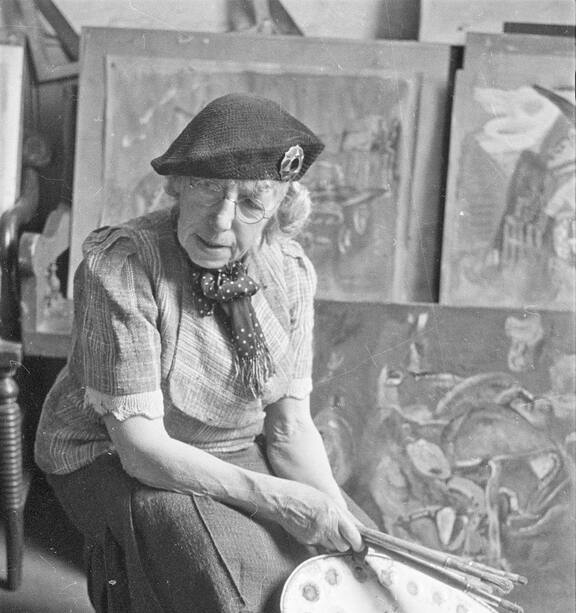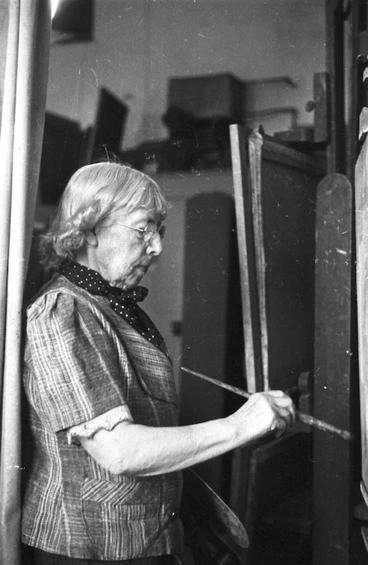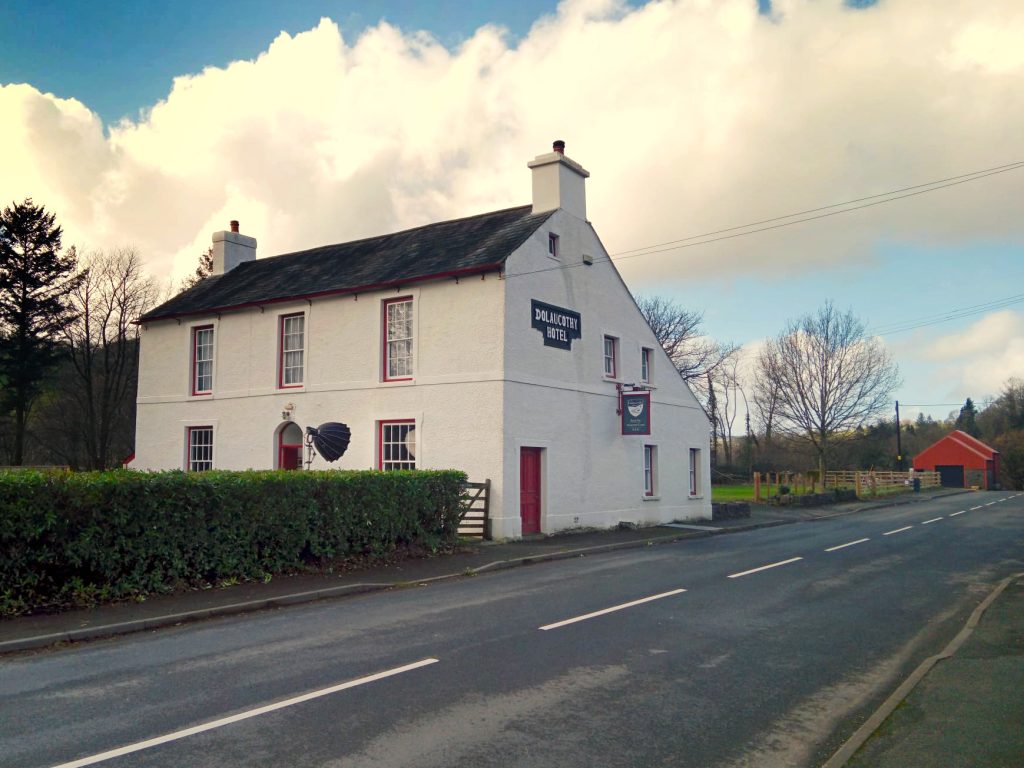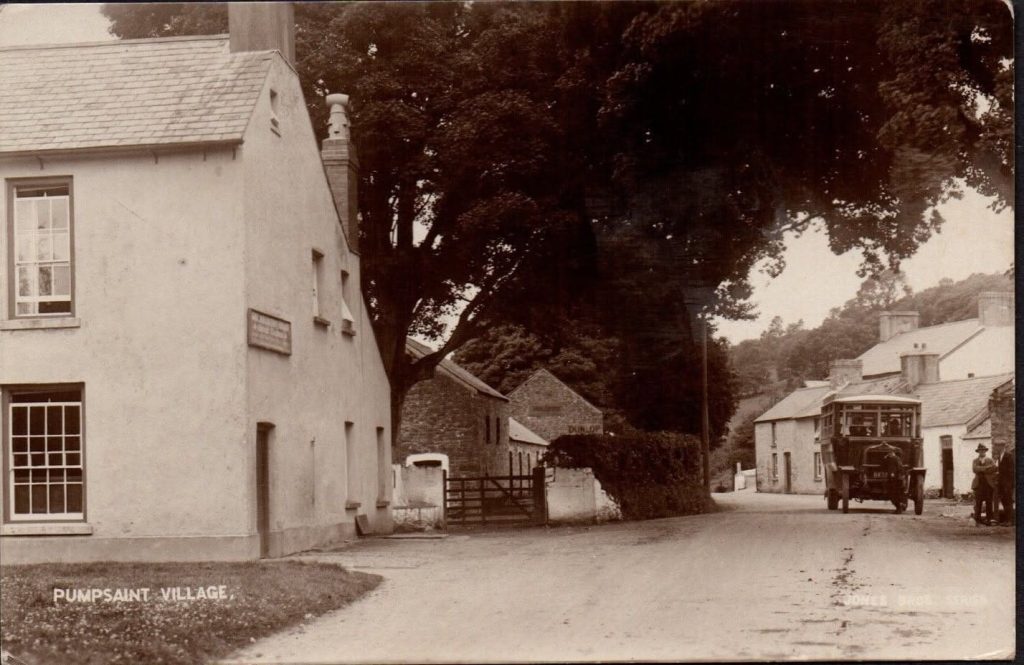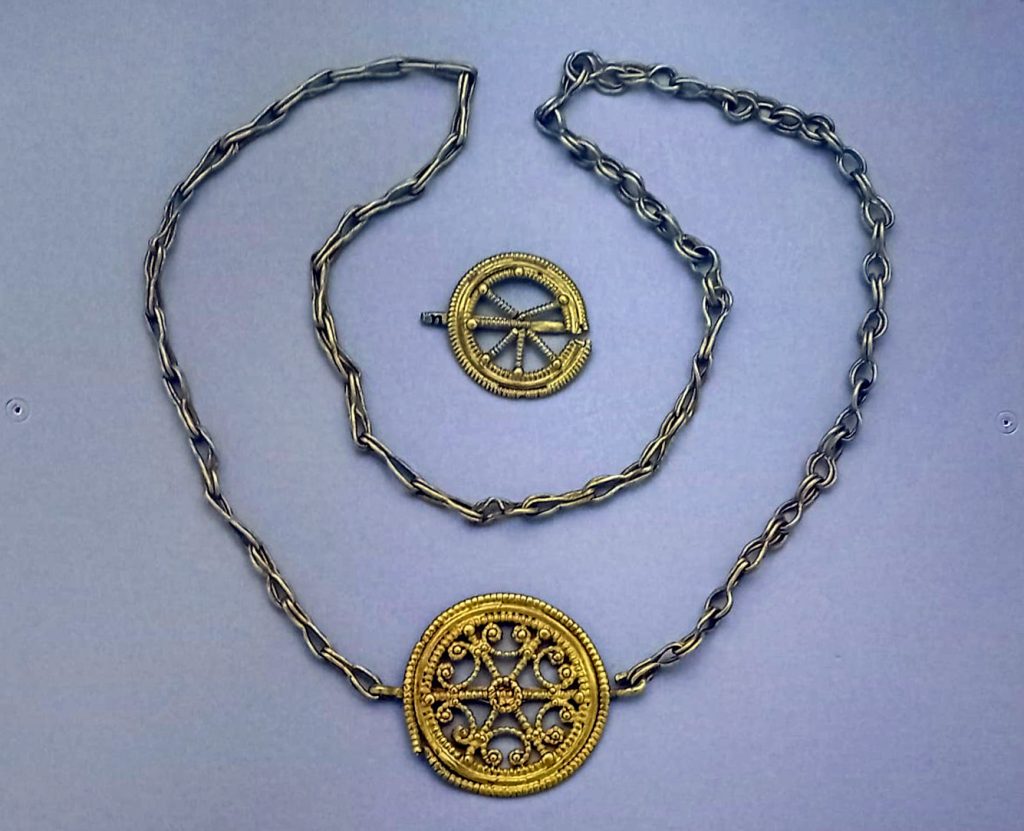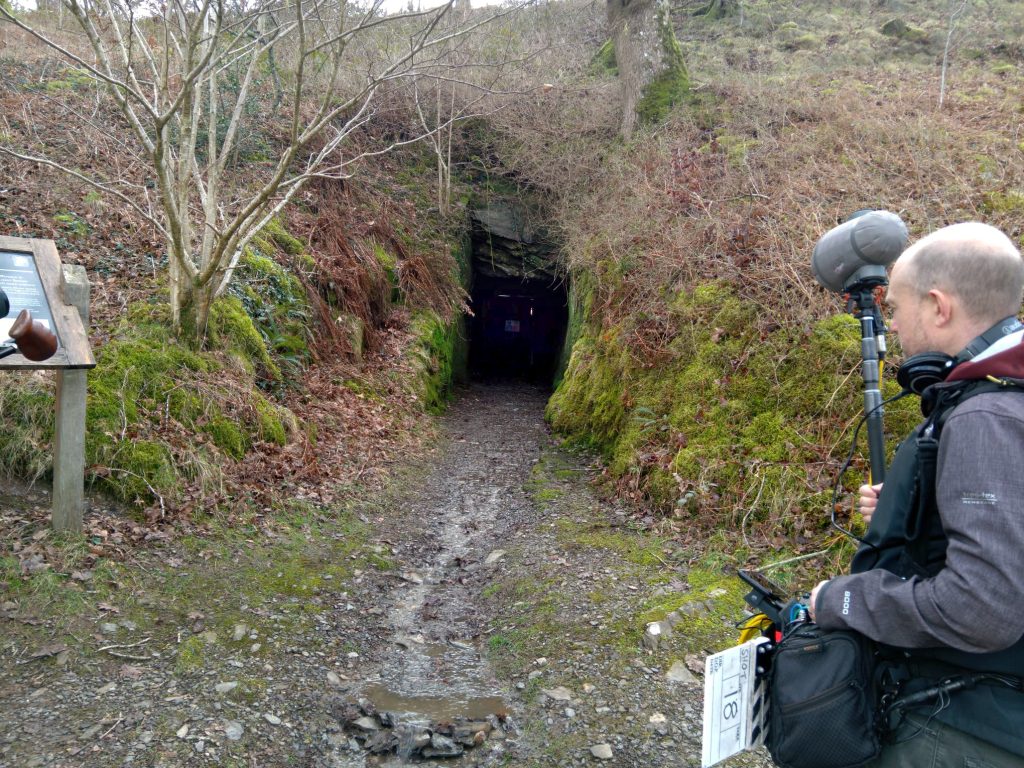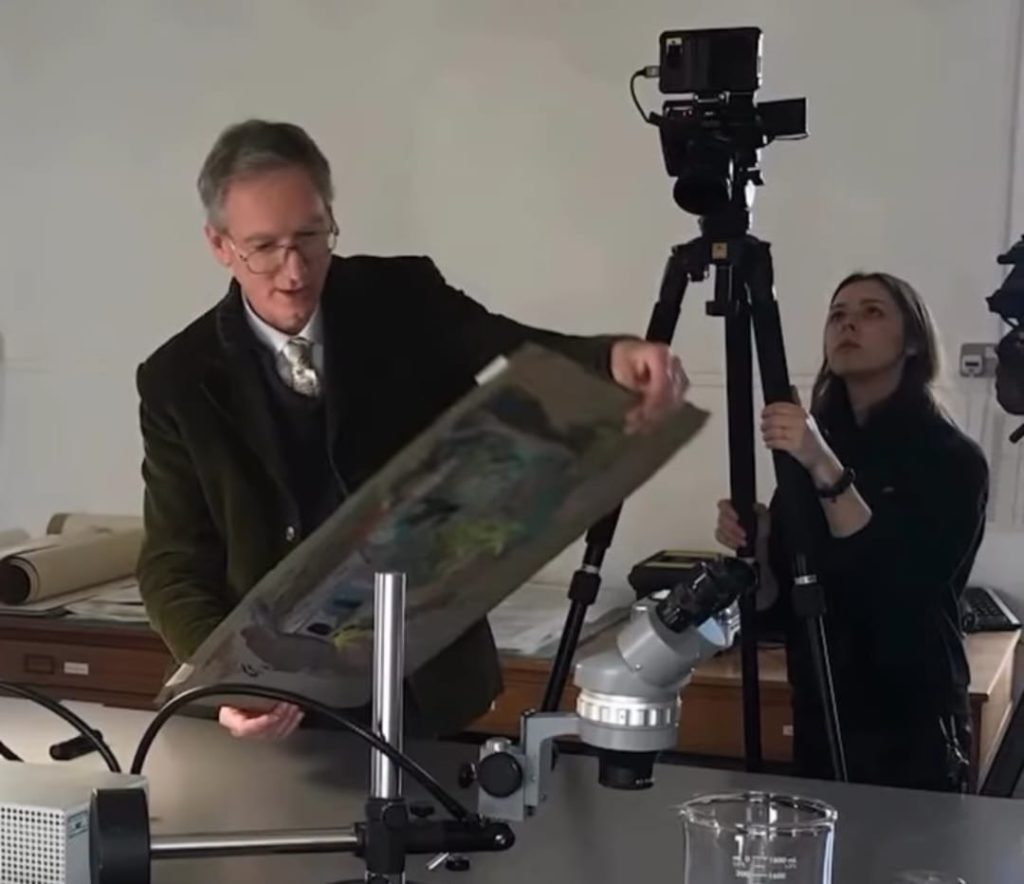As some of you might know, I recently was a contestant on the BBC show Fake or Fortune, so I thought I would give a little background to the painting I appeared with, as well as Frances Hodgkin’s time in the village of Pumsaint, Wales, that is known for the Dolaucothi estate that she named most of the paintings after.
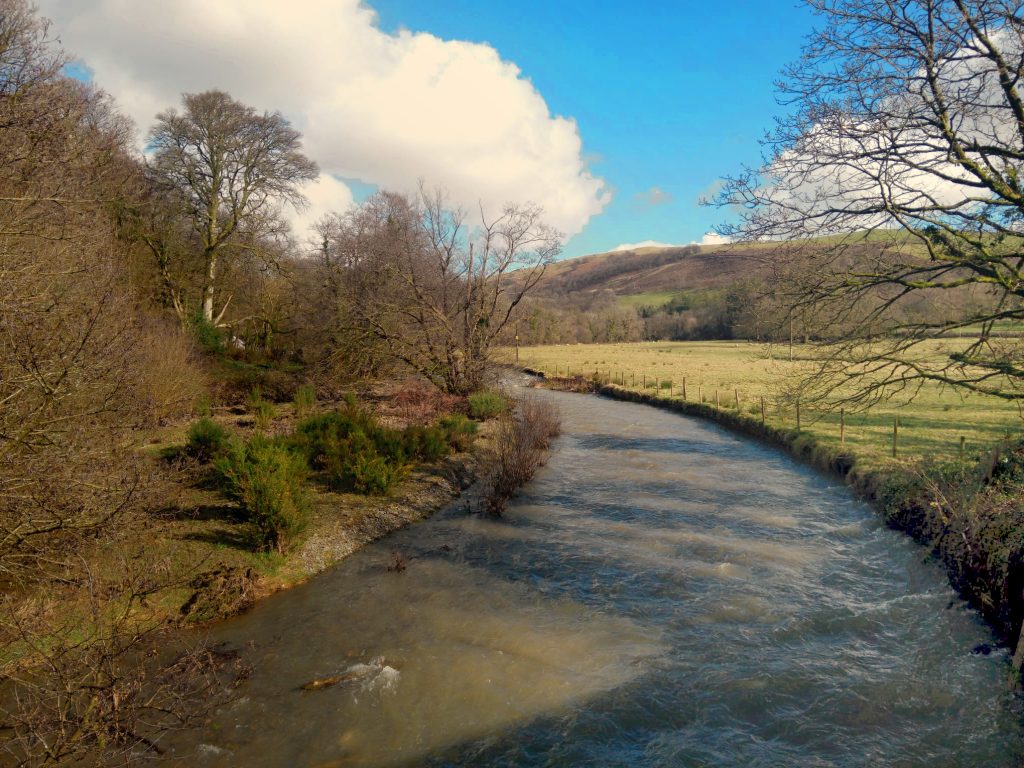
Hodgkins was born in 1869 in New Zealand, educated at the Dunedin School of Art and took courses to become an art teacher. In 1901, she travelled to study at London Polytechnic and went to France to learn under Norman Gartstin and after studying and teaching at various places, became the first woman to teach at Académie Colarossi. All the time she travelled around Europe in a way that today might be normal, but in the interwar years was an expensive and challenging preoccupation.
She had spent the First World War in Cornwall painting and met Cedric Morris there. Though there was an age difference between them of twenty years, Morris and his partner Arthur Lett Haines became good friends of Hodgkins and gave her a home for several months when they moved to East Anglia.
At the time Hodgkins came to Wales in 1942 she was 73. It was likely on the recommendation of Cedric Morris; but why she ended up in Pumsaint / Dolaucothi is a bit of a mystery, as it is very remote, being a small and handsome village 30 miles north of Swansea. We do know that her trip was to escape the war time maneuvers and air raids in Corfe, where she was living. She wished to be in a landscape that she could wander around without having to present her papers to officials, or worry that her work might be considered to be documenting government buildings, as what happened to Keith Vaughan when a painting he made had landed him in court.
Pumsaint is a beautiful village with a river winding around the valley. The chapel below had such fabulous gates out the front. Each post had a memorial to the men of the area lost in each World War.
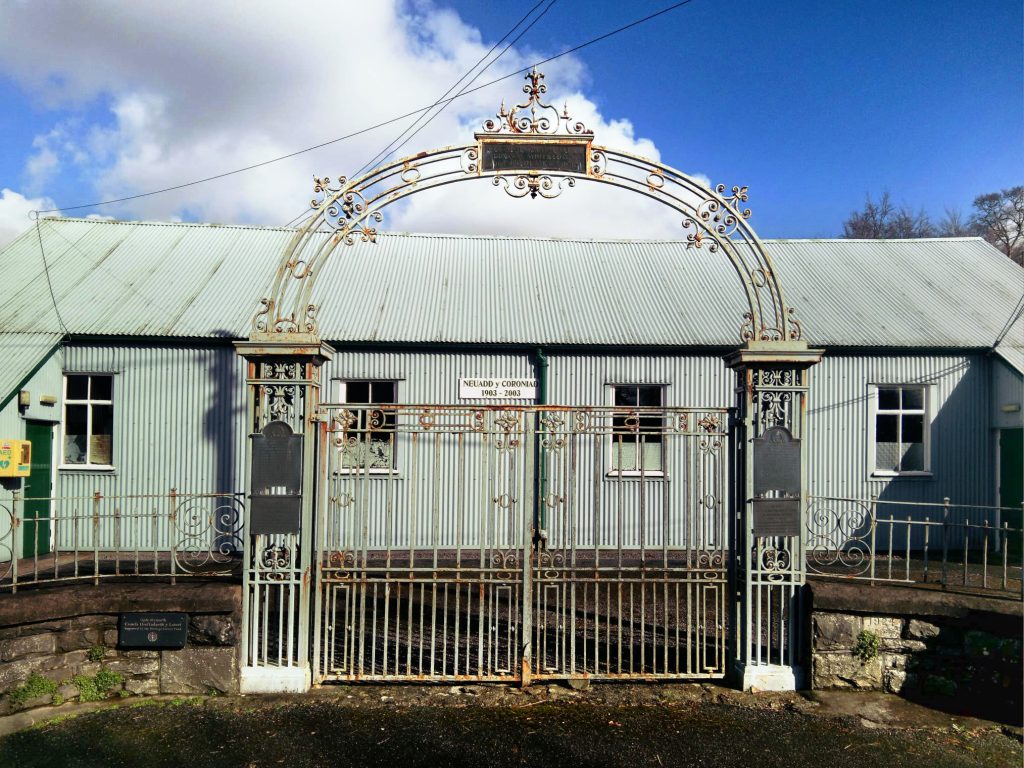
On the other side of the road is the Dolaucothi Arms where Hodgkins stayed throughout her visit. Arriving there she was in bed for days with a cold and then as she recovered she started to paint the area at greater distances. Today the hotel is still open for meals and visitors.
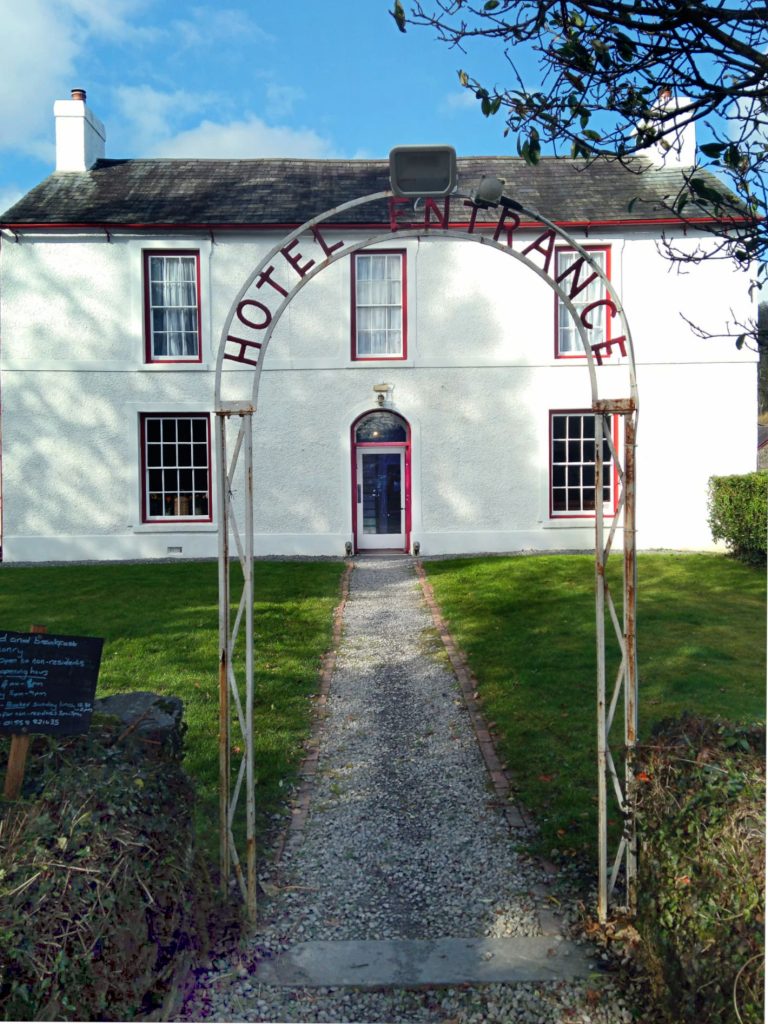
‘I am here & really resting brain and body, wishing you were here … for a spot of mountain air & a spell of sketching before old winter sets in …To me it is paradise after Corfe. Fine country which will be better still in a week or so – harvest in full swing.
Frances Hodgkins – Letter to Dorothy Selby. 16 September 1942.
The Dulancothy Arms and it became the subject of a painting (below), pictured behind the shrub and two dogs.

During her stay in the village, she met art dealer (and later artist) Eardley Knollys, who was working for the National Trust and had come to visit the estate. It was likely him who told her of the estates lands and where the old Goldmines were. After he had returned to London, she wrote to him:
I have done masses of work in between showers of torrential rain, in and about the woods & river of Dolaucothy and have even seriously made pictures of the funny chimney ornaments, which do so lend themselves to decoration – I love them.
Frances Hodgkins – Letter to Eardley Knollys, manager of the Storran Gallery,
31st October 1942
As a footnote to Eardley Knollys: he later inherited a Hodgkins painting from her trip Welsh Farm (1942). Edward Sackville-West left Knollys his collection of works, now known as the Radev Collection.
It is rather hard to guess where the barn in the picture below is, with so many in the area, but as it was a ruined barn and around the time of 1943 it might be likely that they were the barns that stood behind the inn, that have now been pulled down. You can see them in the photograph above (right) as they made up part of the stables for patrons horses. The building in the background (of the modern photo) is a modern one that looks to be on the site of the other in the picture.

The Gold Mine
Between 70AD and 80AD the Romans began the first extensive mining of Dolaucothi creating large open-cast workings and digging several tunnels (adits) to exploit the gold veins. This period of mining will have altered the physical landscape of Dolaucothi beyond all recognition.
National Trust – The Romans at Dolaucothi
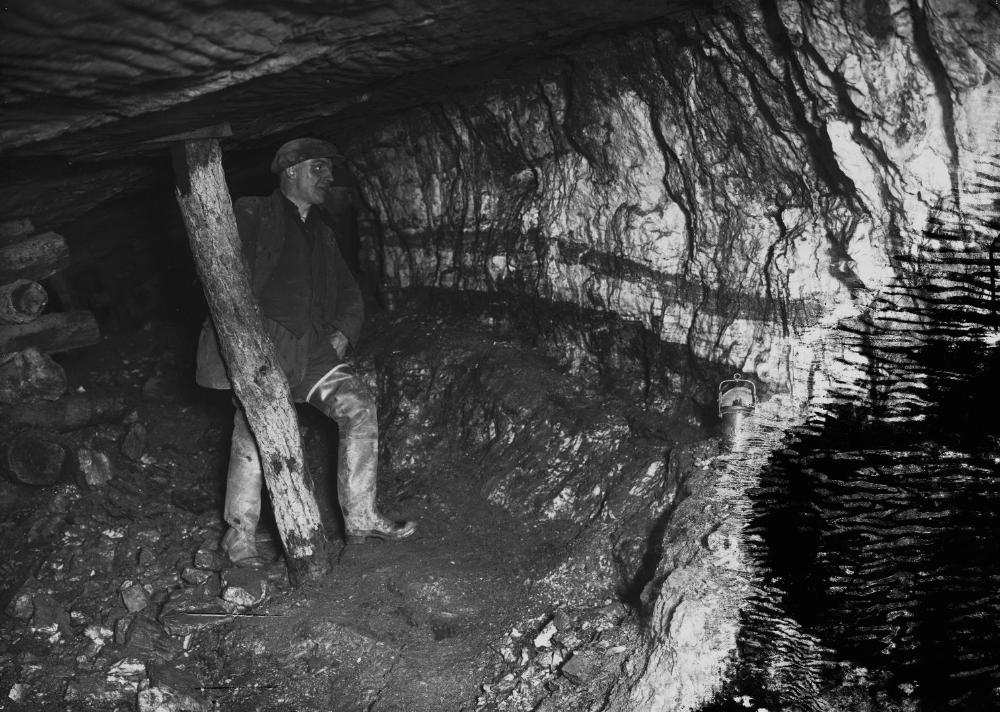
Dolaucothi Estate in Pumsaint is known for the Roman Goldmines; but they had closed in 1938 and and most of the machinery had been sold or scrapped by the time of Frances’ stay. The Goldmine was once part of a large estate around the village, but the family had died off after the First World War and by the time of the Second World War the main estate manor house had fallen into disrepair and the Ministry took over the property, and in 1942 it was given to the National Trust. Most of the manor house was knocked down in 1952 as was the fate of many large properties at that time.
The goldmine was up the road and in the hills from the village. There is a photo of it below, and a necklace made from the gold found in an excavation (now in the British Museum), but at the time Hodgkins was there, most of the machinery had been sold or scrapped for the war effort and it would have been a barren cut in the woodland.
Since then, the National Trust have bought in similar items of equipment and buildings to make the it into a heritage centre and for people to learn about the work at the site. eg: the large excavator pictured below, was moved when another mine pit closed.
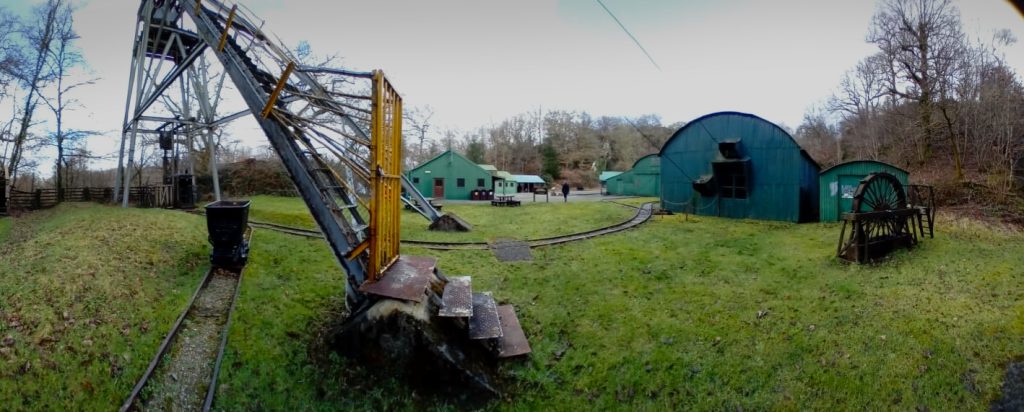
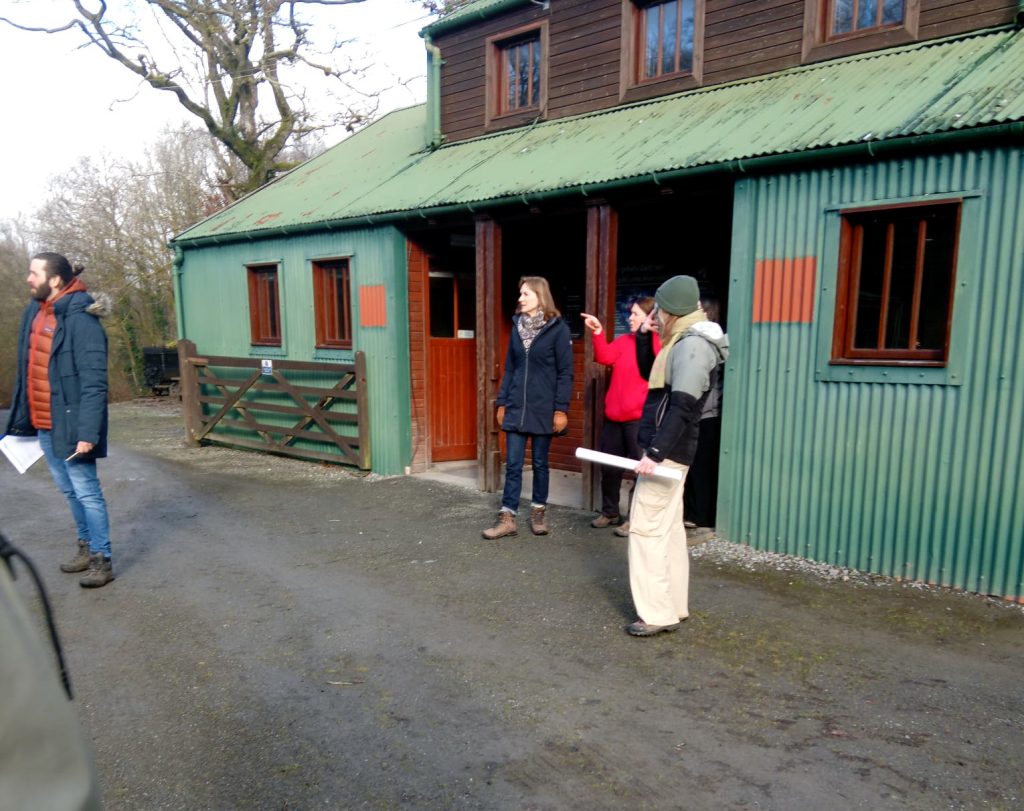
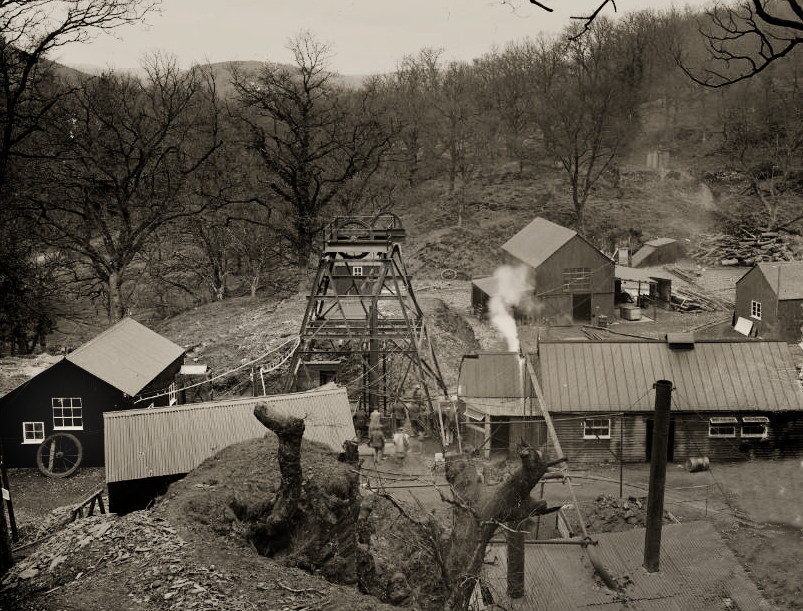
The view (below) from the location of the goldmines is quite high up above the main site with a beautiful vista of the valley through the trees, the Arms where Hodgkins stayed can also been seen.
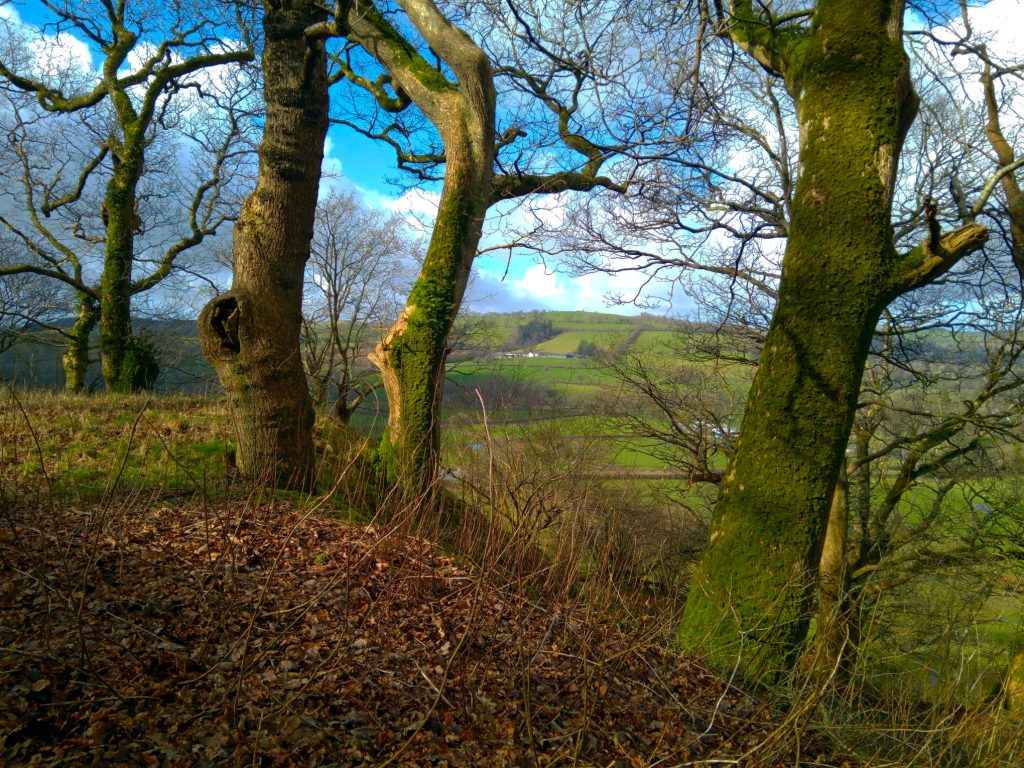
If you have seen the show you will know we did find the goldmine, it was the fourth we inspected on the day. It had a beautiful stream of water flowing out of the entrance and down the side of the hill and is part of the Roman system of flushing out mines with water.
Since the time of Hodgkins visit the entrance to the mine has been cleaned up a little by the National Trust and the wall there and concreate doorway were taken down to leave only the historic elements. This last shaft was the highest on the hill and in the early spring, lacked the foliage that appears in Hodgkin’s painting and the old soil spill had washed away. The angular cut of the roof however is the main identifiable element.
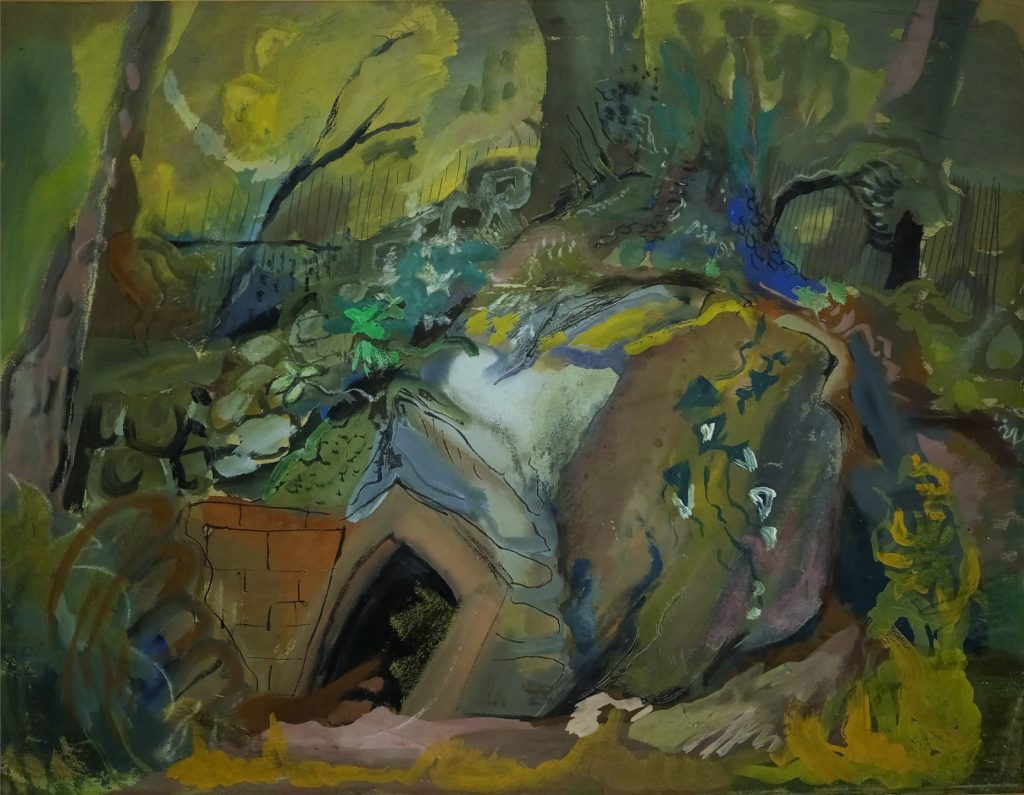
On the back of October Landscape was another painting, quite rare I am told. Sadly we didn’t have time on the show to look into the mysterious elements that make up this work, but I think it is likely to be either a farm or part of the abandoned mine buildings at the time.

Building and Scrubs (1942) has many features similar to that of other works she was painting at that time. Hodgkin’s shared the similar Neo-romantic view of artists like Edward Bawden and Eric Ravilious that ruined landscapes, farmyards and scrap yards were beautiful as seen in Broken Tractor below.
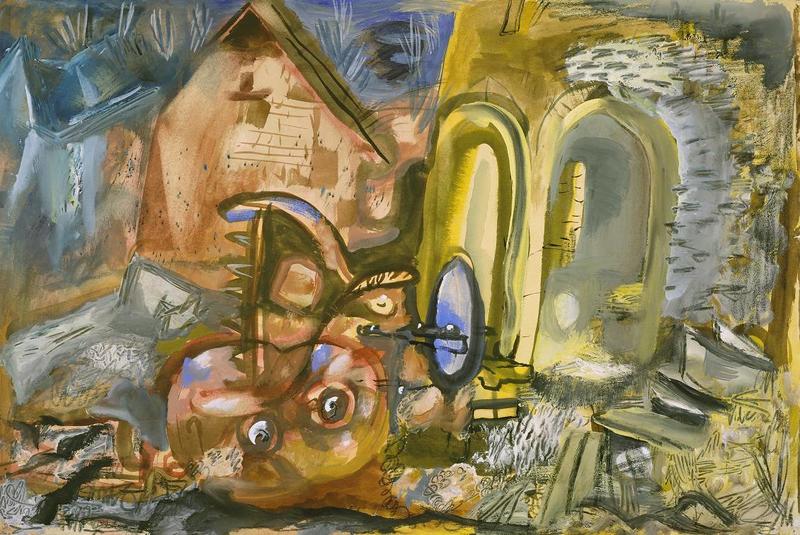
You will see that I am in Wales – in a green valley with a big G… reminding me in some ways of NZ. The weather is just filthy, but it is quiet & off the beaten track… While the weather was good I painted like mad – Did I mention that I am booked for a London Show in the Spring – January or Feb.
Frances Hodgkins – Letter to William Hodgkins, 22 October 2025
William was her brother and the exhibition mentioned took place in March-April
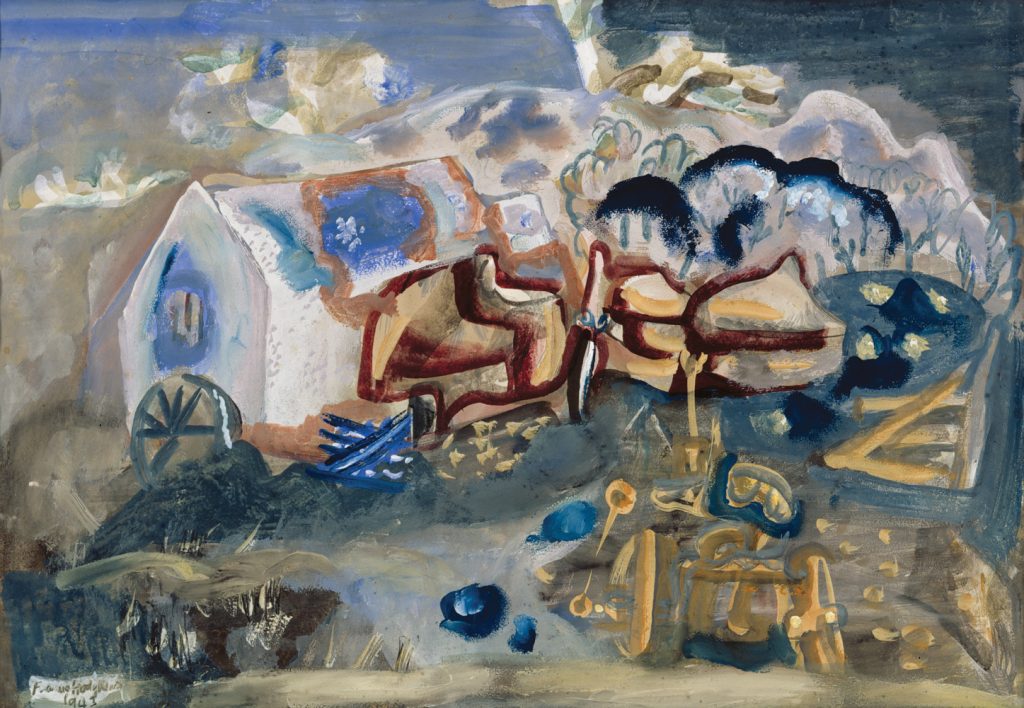
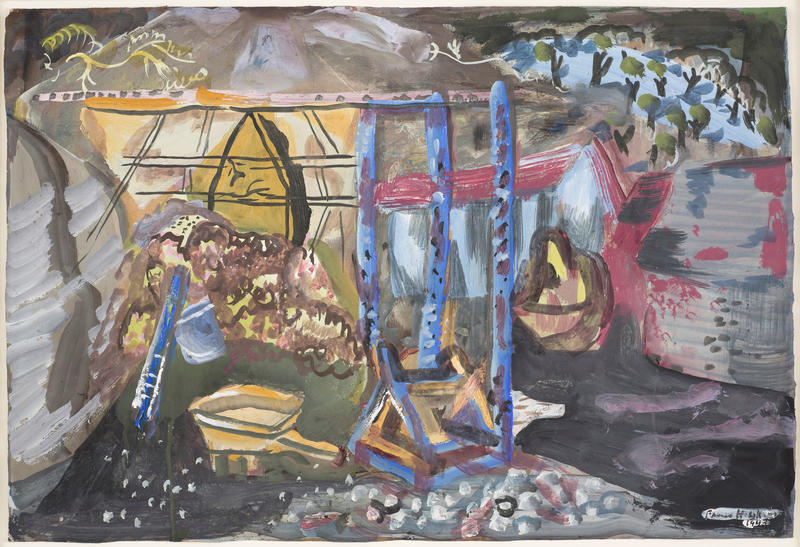
The work that Hodgkin’s made that had the most similar colour tones to October Landscape is The Water Wheel below, also painted while at the mine as the water was used to wash soil from the gold.
When historic mines were reopened in Rio Tinto, Spain, Rosia Montana, Romania, and Dolaucothi, west Wales, remnants of the water wheels used for lifting water were unearthed.
Fouad Sabry – Roman Military Strategies, Tactics, and Innovations of Ancient Warfare (2024)
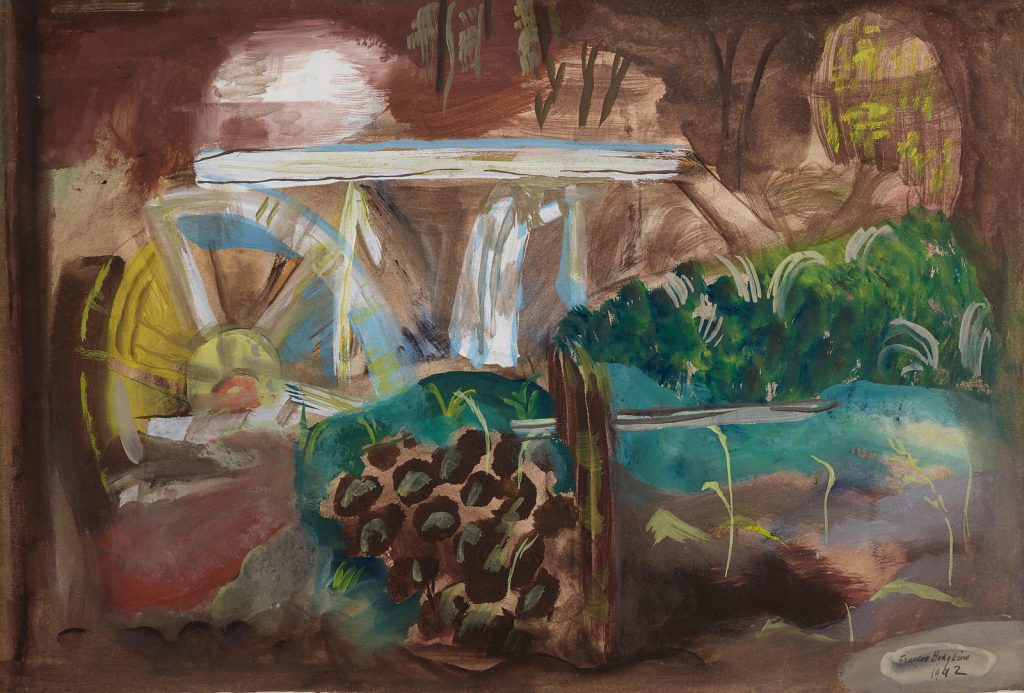
Hodgkin’s had got herself a contract to paint works for the Lefevre Galleries in London. They would supply her with money upfront, and she would paint works for exhibitions. As she became an alcoholic her paintings switched from oil to gouache and when the money ran out she started to paint on paper with less quality. Many of the later works were painted on a unusual papers – compared to what other artists were using. The other explanation is that during the war, large paper was getting harder to source in rural locations.
The works that were made in Wales and Purbeck where exhibited at the Lefevre Galleries in 1943 in a very successful show. Only three of the works had not sold: October Landscape, Trees and Ricks, and Broken Tractor.
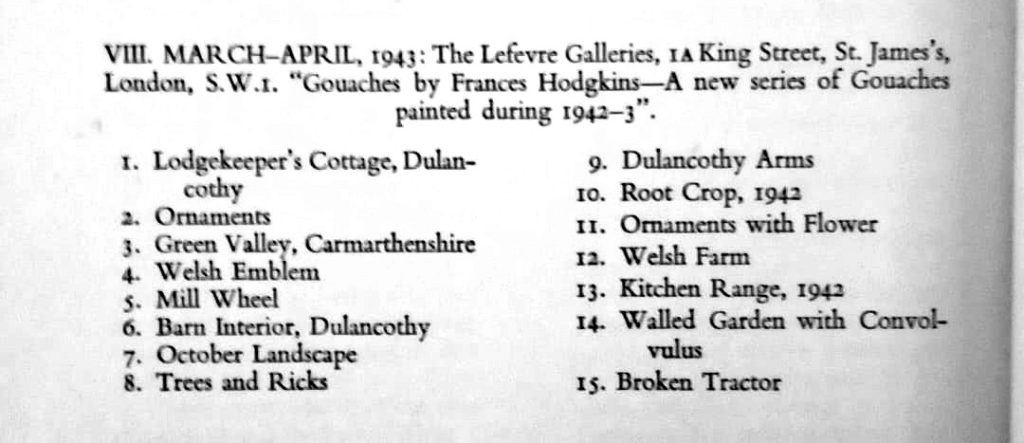
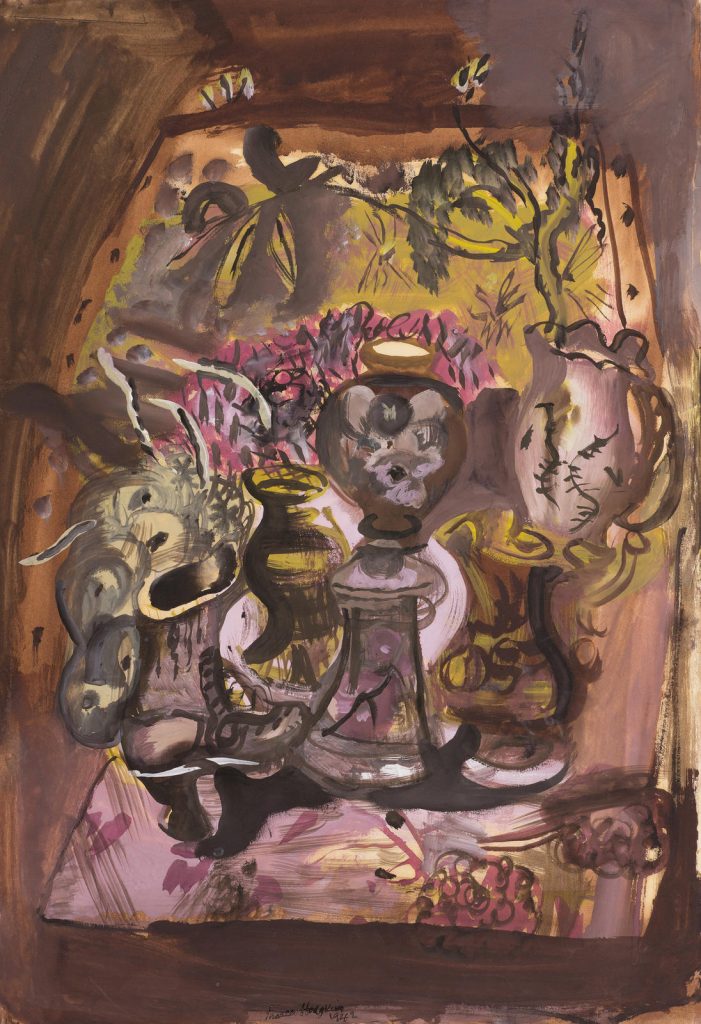

So you might think that my story is over and there is nothing else to discover. Well not quite. In a mad whim I decided that I would take a chance on another work by Hodgkins, one very similar to the works she made in Purbeck. Like October Landscape.
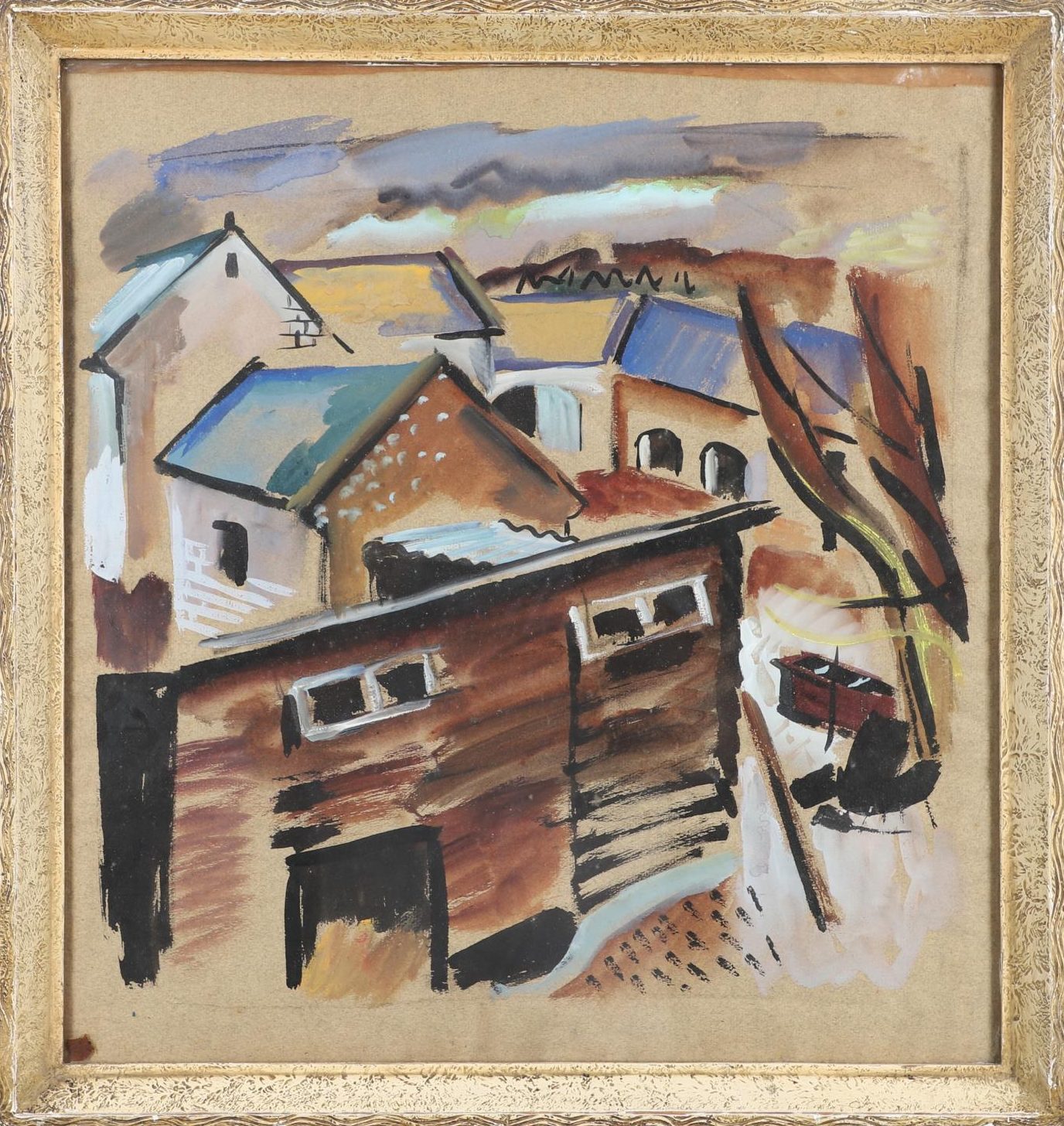
The provenance was from the family of Mary Duckworth / Buxton / Hope. I think from my basic researches that this may be a relative of Thomas Hope who married Katherine (Kitty) Church’s sister Elizabeth.
Kitty Church married Anthony West (Son of Rebecca West & H G Wells) and Anthony and Kitty were painted by Hodgkins, and a solo portrait of Kitty by Hodgkins is now in the Tate. The search never ends but the painting is very similar to The Valley Mill (1930) and sold by Lefevre Galleries in 1942.
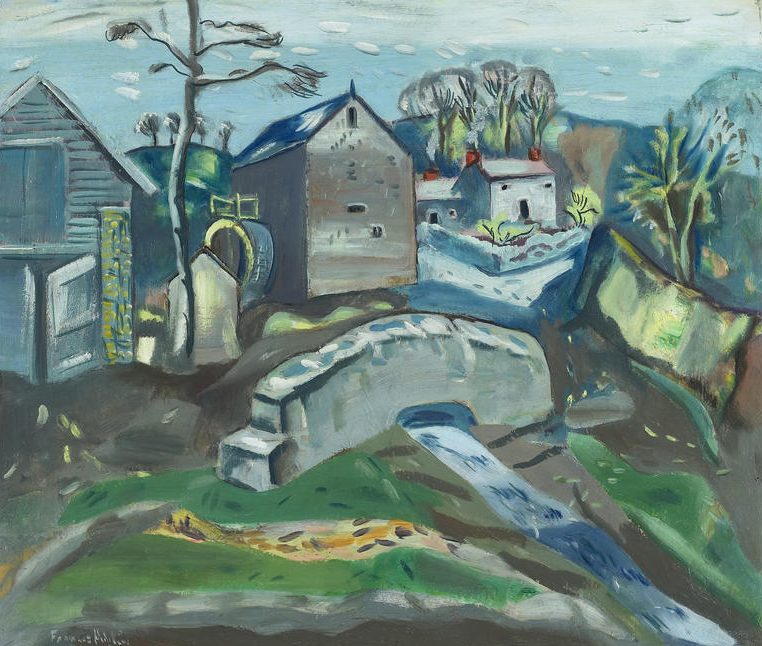
You can discover more about pictures for schools in my new book: Nan Youngman and Pictures for Schools.
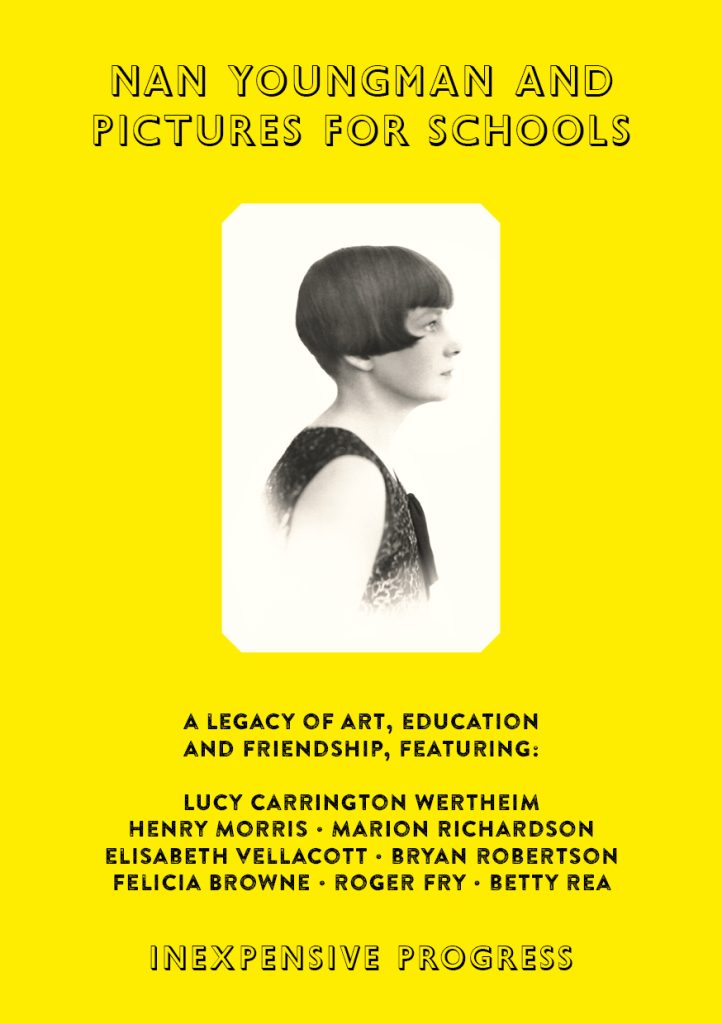
Nan Youngman & Pictures for Schools by Robjn Cantus
